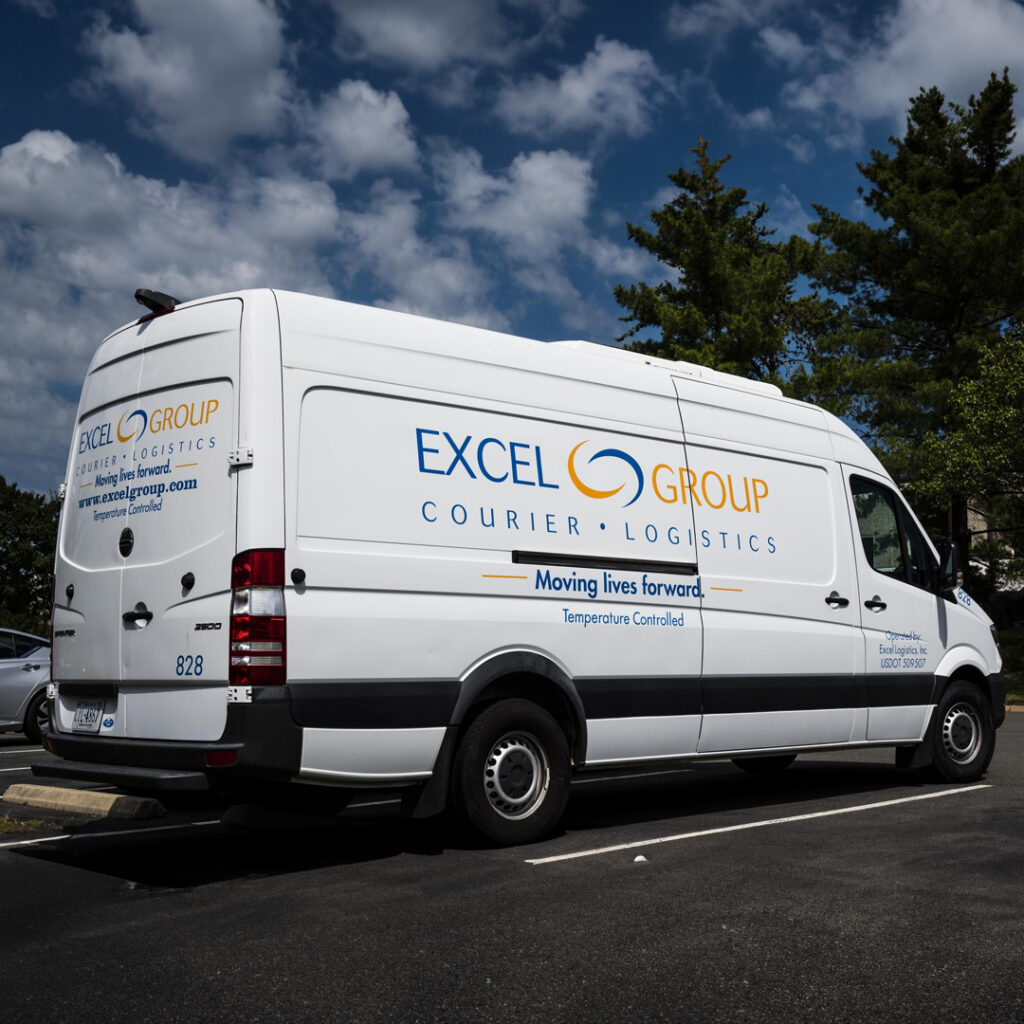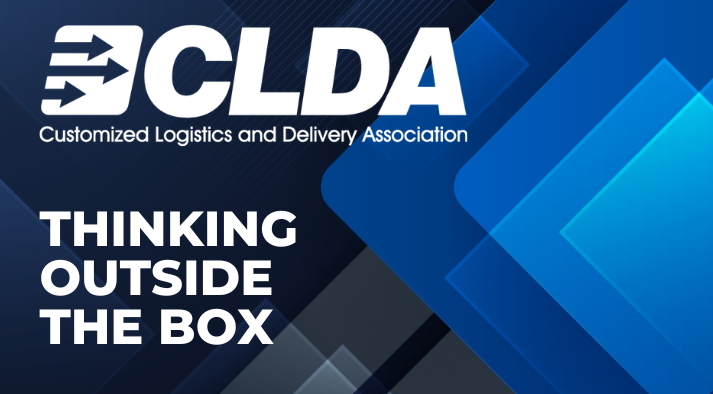
How do successful last-mile carriers continually bring in new customers? How do they attract hot leads and turn warm ones into business? By making the most of the digital marketing tools that fuel business growth in today’s marketplace.
“Thinking Outside the Box” recently interviewed Tom Lickliter, senior web strategist at AnchorWave Digital Marketing Agency. The company has played a critical part in the growth of many companies in the last-mile space. Here’s what Tom told us about making the most of today’s digital marketing tools.
Websites
Your website is your salesperson online. It’s out there working for you 24/7, 365 days. It needs to be a conversion engine. By that, I mean it needs to get people to take action when they get there.
Your website needs to speak to your audience and have clear value propositions. It should have a page that says, “Why choose us?” It needs to tell the visitor why you’re different. Don’t make the visitor think. When they land on your website, tell them exactly why you’re the company they should be working with. That’s your value proposition.
You need to identify your buyers. For those in the last mile, you must speak to those who can hire you. Make sure your content is written for them and has clear calls to action. We know that 30% of website visitors are more likely to engage with a company if they feel that content is written for them. So, by identifying your buyers and writing content for them, you’ll get more interaction.
Good websites answer questions, overcome objections, and help eliminate limiting beliefs your potential buyers might have. You know what your prospective clients think, the questions they have, and the objections they have. Answer them. They will move on to the next website if you don’t answer their questions.
Also, make sure your site includes trust symbols. These are things like the logos of the professional association you’re a member of, like the CLDA, and logos that indicate what certifications and licensing your company has. These build authority in your industry, in your space, and on your site.
Analytics
Your website needs to have analytics tracking so you can see what’s working and what needs to change. Analytics can tell you who’s going to your site. Where did your traffic come from? How long did they stay? What pages did they look at? That information is very valuable to identify so you know where the most engagement is happening on your site.
Analytics also allow you to retarget those who visit your site, spend some time there and leave. Retargeting is a valuable tool for capturing the people who visit your website, look around for a little while, and leave before they take action. People go to your sites for a reason. Even if they leave, chances are they still have that need. They are what we call a “warm audience.” If you
stay in front of them with paid ads, it will make an impact. That’s retargeting. You are putting an ad back out in front of that warm audience who went to your site.
Search Engine Optimization (SEO)
Search engine optimization (SEO) is about letting your buyers find you online. Search engines like Google don’t look at a website like you and I do. What Google looks for on a website are clues. Google is all about answering people’s questions. Giving them what they are looking for. Those “clues” help it deliver what they are looking for. If they don’t find apparent clues like “delivery” and “final mile,” Google won’t deliver your site to those searching for a final-mile provider.
Making this happen is what digital marketing agencies like ours do. It’s not something an IT person can deliver. It’s often not a website builder. Digital marketing agencies do keyword research that helps them identify the terms your potential buyers are searching for. We’ll plug those all over your site so Google can see them. If someone is searching for something like “final mile delivery near me” and your site says final mile all over it or delivery services or those key search terms, Google will see that and deliver them to your site. That’s what search engine does.
Dos & don’ts when it comes to websites
Do
- Make sure your site is optimized for mobile. Over 50% of all website traffic is on a cell phone, surpassing desktop searches. You’re losing traffic if your site doesn’t look, operate, and function well on a cell phone, tablet or laptop.
- Make sure your site has very clear calls to action. These might include things like “Click here for a quote,” “Click here for our pricing,” “Click here to track shipping,” “Contact us,” or “Call us.”
- Make sure you have real testimonials and case studies on your site. You can tell me all day long how great you are, but what I hear from others—your clients who love you—makes more of an impact. If someone sees somebody on a website who reminds them of themselves, they are more likely to engage with that company. Get video testimonials. Publicize your reviews. Put up case studies.
Don’ts
- Overload your site with unnecessary videos and pop-ups. People get annoyed with that stuff.
- Use outdated stock photos. Use good, authentic photography that makes a connection with your website visitors.
- Have a site with outdated branding or design. People will turn away immediately if your site is old and obsolete. If your website is outdated, they’ll wonder about your service. Your site is your storefront for people not driving over to your storefront.
- Have broken links and outdated blogs. If you haven’t had a blog on your website in two years, people will wonder if your business is still active and thriving.
Blogs
Blogs accomplish more than you can imagine. One of the things that blogs accomplish is that they give valuable information to your website visitors. Blogs also help with your SEO. Suppose somebody is looking for a final-mile courier service. Google looks at those companies with the most information about that topic, and blogs are certainly a part of that.
You should put a new blog on your site at least once a month. If someone goes to your site and you haven’t done your blogs in six months or a year, it looks like you’re not an active business. Google also gives preference to websites that offer new information. It says to them yours in an active and thriving business.
Reviews
Reviews are so critical. Statistics show that 97% of people search for business online, and 93% read reviews about that business. In fact, 87% of people surveyed say that they trust online reviews almost as much or as much as personal recommendations from people they know.
These days, complete strangers are helping us make our decisions. Reviews permeate every section of society. And don’t think it’s not important in your industry. I guarantee you it is. To get those reviews, you have to ask and make it easy for your customers to leave them.
When customers tell you how great they think you are, ask them to leave a review. Many will say yes and intend to do it. But they don’t. How can you change that? Make it easy for them. Ask them in an email or text. Put a QR code button on your website. Hand out little business cards with a code that brings them right to review sites. You need to ask. Ask frequently. Ask promptly, and then make it really easy.
You want reviews in what we in digital marketing call the Big Four—Google, Facebook, the Better Business Bureau and Yelp. Yes, Yelp. Yelpers love Yelp, especially those on the East and West Coasts. Yelp is extremely popular there. As you move towards the country’s center, Facebook is a good place. Once you have those reviews, publicize them on your site.
I want to talk about Google reviews. These are number one. If someone is searching for a business, they go to Google. Good Google reviews are positive social proof.
The sweet spot for reviews is between 4.3 and 4.9 stars. If you have 480 5-star reviews, it’s suspect. No one will believe you’ve never made somebody unhappy.
So, publicize those reviews and use them in your marketing material, your website, your printed material, and any other marketing you do. After you build that reputation, you’ll get mileage from the reviews.
Also, answering reviews is super important. If you get a negative review, you have absolutely 100% need to answer that review. And do it in a very upbeat, positive manner. Nobody wins an online public argument, so be sure you answer it correctly. Don’t forget to respond to positive reviews, too. Say, thank you. It goes a long way. Let’s say somebody searches for “Carriers near me,” and somebody leaves your review and says they’re the best carrier in the state. Google sees that, and it will impact their search engine optimization.
Social Media
Social media is about building a business’s trust, credibility, and brand awareness. When I go to somebody’s website or Google page, I look for their Facebook and Instagram because I want to see if they are being social and contributing to the community.
That brings up the question of how often you should post. At a minimum, it should be every three days or so. When we do it for our clients, we post every other day, but that’s what we do. We also have clients who do their own because they have somebody in-house and do it every day.
Don’t get involved with social media if you aren’t committed to regular posts year-round. You can always tell the company that’s not committed to social because all their posts are in the summer. That’s because they had an intern summer who comes in, fires it up and then goes back to college in the fall without anyone keeping it up. It sends the wrong message if people see you haven’t posted in a while.
Google My Business
Google My Business is SEO 101. It’s the hot ticket in SEO. If you don’t remember anything from this post, remember that Google loves Google.
Let’s start with the basics: Your Google My Business profile gives your company’s name, address and phone number. It’s like the white pages in the old phonebook. Today, you also get what’s equivalent to a half-page color ad for free from Google. You can include a ton of information in those 750 words, like the products you offer and the industries you serve. Post pictures and geotag them so people know the areas you serve. You have 750 characters that identify what you do what you do for your clients and how you help them with their business. Make sure your content here is keyword-rich.
You can also post there, just like on your social media. We do it every week for our clients, and that content is keyword-rich, so Google sees that yours is an active and thriving business.
What’s the best use of a carrier’s resources with limited dollars?
If you invest in digital marketing, you need to do it systematically. The foundation of everything you do online starts with three pieces: your Google My Business, reviews, and a professional website.
- Make sure your Google My Business profile is complete and optimized for Google search. It’s filled out completely. You’ve taken advantage of everything that Google allows you to do. You have posts on there every week, that kind of thing.
- Next review. Make sure you get and promote good reviews.
- Next is a professional website. If your website looks like a 16-year-old built it over the weekend or you have two and a half stars on Google, it will stop right there. Don’t ask somebody to start running the ads and driving in traffic. You know it’s going nowhere.
What’s the bottom line for last-mile carriers looking to attract new customers?

All those pieces get potential buyers over the trust tipping point. The trust tipping point is a journey buyers go on when they are online, looking around for a product or service. When you develop that trust with the evidence they need, you build the foundation of trust that turns them from people searching for information to buyers.
Get your company a digital strategy tailored to create trust. First, put the foundations in place—your website, Google My Business and your reviews. Every pyramid needs a solid foundation. Build those up, and they will drive business to your bottom line.






